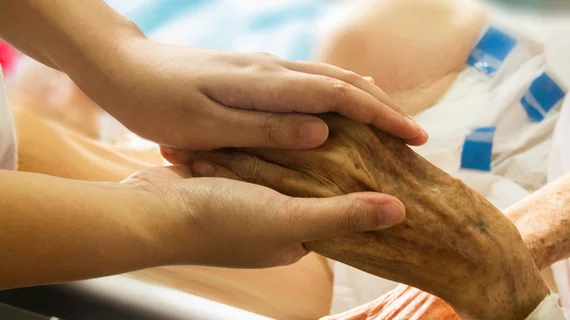Up to 25% of physically unresponsive patients are still conscious, imaging shows
New MRI data reveal that a significant number of patients who are unresponsive due to brain injury may actually be conscious.
The phenomenon, known as cognitive motor dissociation, occurs in as many as 25% of patients—more than prior studies have indicated, researchers recently discovered. The findings were published this week in the New England Journal of Medicine, where researchers expressed optimism for what the study’s results could mean for the future of caring for patients who outwardly appear unresponsive.
“These results bring up critical ethical, clinical and scientific questions—such as how can we harness that unseen cognitive capacity to establish a system of communication and promote further recovery?” lead study author Yelena Bodien, PhD, an investigator for the Spaulding-Harvard Traumatic Brain Injury Model Systems and Massachusetts General Hospital’s Center for Neurotechnology and Neurorecovery, and colleagues wrote.
The study utilized functional MRI and electroencephalography (EEG) to monitor the brain activity in 353 adults with disorders of consciousness (vegetative states, comas, etc.). During the exams, researchers gave the patients verbal task-based commands, monitoring both observable physical responses and those that could only be seen via EEG or MRI. The median time between patients’ brain injuries and the assessment was just under eight months.
Of the patients studied, 50% had brain trauma. Cognitive motor dissociation was detected in 25% of patients who did not show obvious physical responses to prompts and in 38% of patients with observable physical reactions. Being younger in age, having had more time pass since the injury occurred and having brain trauma as an etiologic factor were all associated with the uptick in brain activity following commands.
“Families have told us that once a positive test result revealing cognitive motor dissociation is shared with the patients’ clinical team, it can change the way that the team interacts with their loved one,” Bodien said. “Suddenly, the team is paying more attention to subtle behavioral signs that could be under volitional control, or speaking to the patient, or playing music in the room.”
The authors acknowledged that a limitation of their study was a lack of standardization between the sites that participated in the research. This could have created variability in the results.
Future research into cognitive motor dissociation should seek to standardize methodology and improve access to the diagnostic processes that determine who remains responsive after a brain injury, even when there aren’t obvious physical indications of consciousness, the group suggested.
“We know that cognitive motor dissociation is not uncommon, but resources and infrastructure are required to optimize detection of this condition and provide adequate support to patients and their families.”

